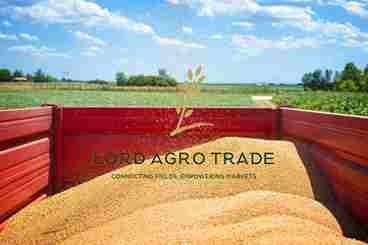Gulfood
17 To 21 FEB 2025 | DUBAI WORLD TRADE CENTRE
We’re excited to see you at Gulfood 2025!
Gulfood
17 To 21 FEB 2025 | DUBAI WORLD TRADE CENTRE
We’re excited to see you at Gulfood 2025!


Canada is the world’s largest producer and exporter of lentils, accounting for about 56% of global lentil exports. Lentil cultivation is concentrated in the Prairies – Saskatchewan alone produces roughly 90% of Canada’s lentils , and Canada typically exports about 85% of its lentil production.
In 2023, Canadian lentil production was nearly 1.7 million tonnes (down from a record 2.3 million in 2022). This report analyzes the effects of U.S. tariff policies on the Canadian lentil industry, including trade volumes, pricing, adaptive strategies, policy changes, market trends, and diversification efforts. Canada’s lentil sector is served by several key processors and exporters. These companies handle procurement from farmers, processing (cleaning, splitting, packaging), and exporting to global markets.
Canada exports the bulk of its lentil production each year. In 2023, Canada exported nearly 2.0 million tonnes of lentils, valued at about CAD 2.3 billion. This was an increase from roughly 1.9 million tonnes in 2022. The record export volume was 3.1 million tonnes in 2020, following a large 2016 harvest. By contrast, Canada’s lentil imports are minimal – typically only a few tens of thousands of tonnes – to supplement domestic supply in short crop years. For example, Canada imported only about 10,000 tonnes of lentils.
Notably, Canada was the destination for ~41% of all U.S. lentil exports in 2022-23. reflecting these small northbound volumes.) This means Canada is a net exporter by a wide margin, usually exporting ~ 85% of the lentils it produces.
Under normal trade conditions, Canadian lentils enter the U.S. tariff-free, with 0% import duty. The United States-Mexico-Canada Agreement, implemented in 2020, maintained duty-free access to Canadian agricultural products, including lentils. Thus, no tariffs on lentils traded between Canada and the U.S. are currently applied. However, in recent years, the prospect of U.S.-imposed tariffs emerged during trade disputes and negotiations, raising concerns about potential impacts on prices and trade flows.
Proposed U.S. Tariffs: During the Trump administration, especially around 2017–2018 and again with the 2024 U.S. election, U.S. officials floated the idea of broad import tariffs on Canadian goods, including possibly a 25% tariff on certain agricultural imports . Though these punitive tariffs did not ultimately take effect for lentils, the announced 25% figure signalled the scale of impact that was possible.
If a 25% tariff were imposed on Canadian lentils, it would significantly raise the cost of Canadian lentils in the U.S. market, likely forcing importers to pay higher prices or source lentils elsewhere. In practice, such a tariff would be a price increase: U.S. buyers would either pay ~25% more (passing costs to processors or consumers) or demand lower prices from Canadian suppliers to offset the duty.
Impact on U.S. Prices: A U.S. import tariff would make Canadian lentils more expensive in the U.S., potentially raising lentil prices for U.S. consumers. Because lentils are a commodity, U.S. importers faced with a tariff might attempt to substitute with domestic U.S. lentils or imports from other countries not subject to the tariff. However, Canada is the world’s dominant lentil supplier, so alternatives are limited.

In the case of a full 25% tariff, the landed cost of Canadian lentils in the U.S. would jump, which could push up wholesale and retail prices for lentil products in the U.S. market. Such tariffs on Canadian farm imports tend to increase costs for U.S. farmers (and consumers) more than anyone, as buyers have to pay more or face shortages.
Impact on Canadian Prices: For Canadian lentil growers and exporters, U.S. tariffs would likely exert downward pressure on farm-gate prices in Canada, but only to a limited extent due to the small share of exports going to the U.S. If the U.S. market (~5% of Canada’s volume) became less accessible, Canadian suppliers would need to redirect that portion to other countries. To “buy” demand in alternate markets, they might have to offer a price discount, potentially reducing Canadian lentil prices modestly.
In essence, the loss of the U.S. outlet could force Canadian exporters to accept slightly lower prices elsewhere (for example, to outcompete other suppliers in Asia or feed markets). However, lentils would be among the least impacted crops in this scenario because Canada’s export portfolio for lentils is diverse, and the U.S. accounts for a relatively minor share . Industry analysis indicates that even a complete loss of the U.S. market would be manageable for Canadian lentils, especially compared to other pulses like chickpeas or dry beans, which rely more heavily on U.S. buyers .
In summary, while actual U.S. tariff rates on Canadian lentils remain at 0%, the threat of tariffs (up to 25%) created uncertainty. A high U.S. tariff would raise U.S. consumer prices. It could weaken Canadian farm prices as exporters seek alternative markets. However, the diversity of Canada’s export markets would buffer the overall impact on Canadian lentil pricing.

Adaptation Strategies: Canadian lentil exporters have proactively adapted (and continue to adapt) to the possibility of U.S. tariffs and other trade barriers. Key strategies include:
Diversifying Export Markets: Canada has deliberately cultivated various lentil export destinations. This diversity is a strategic buffer against any country’s tariffs or import restrictions. Since the U.S. is a small part of Canada’s lentil export mix, exporters can relatively easily pivot shipments to other countries if U.S. trade becomes uneconomical. Canada’s overall customer base for lentils is highly diverse, which helps buffer the impact of any lost lentil shipments to the U.S.
Value-Added Processing: Some Canadian firms are increasing domestic processing of lentils into value-added products (e.g. lentil flour, protein isolates, canned lentils, or ready-to-eat foods). By processing lentils, exporters can sometimes change the product category, avoid raw commodity tariffs, or command higher margins to absorb added costs. Such investments not only open up new revenue streams but also make the supply chain more resilient to tariffs – if raw lentils faced a duty, exporting processed lentil products might not, or Canadian companies could sell these products into domestic and non-U.S. markets more easily.
Flexible Supply Chains: Major exporters, which gives them flexibility to reroute shipments and adjust logistics in response to tariff changes. Suppose U.S. tariffs made direct Canada-to-U.S. lentil sales less viable. In that case, these companies could, for example, ship Canadian lentils to their processing facilities or partners in the U.S. or third countries for re-export or use inventories in the U.S. network, which helps exporters adapt by essentially working around trade barriers when needed.
Policy Engagement and Market Development: The Canadian pulse industry (through organizations like Pulse Canada and Saskatchewan Pulse Growers) has actively engaged with government and trade officials to mitigate tariff impacts. This includes lobbying for dispute resolutions (in cases of unfair tariffs), utilizing trade agreement channels, and working on market development initiatives. For example, when faced with U.S. trade uncertainty, Pulse Canada intensified efforts to grow demand in alternative markets and even domestically (promoting the health and sustainability benefits of lentils to increase domestic consumption).
Overall, Canadian exporters have shown agility in the face of tariff threats by broadening their market reach and adding more value to their products. These steps ensure that even if U.S. tariffs make one market less accessible, Canadian lentils can find a home in many other markets with minimal disruption.
Trade policies in recent years have directly shaped the landscape for lentil exports to the U.S.:
NAFTA to USMCA (2018–2020): The renegotiation of NAFTA brought uncertainty but ultimately preserved free trade for lentils. Under NAFTA, Canadian lentils entered the U.S. duty-free, and this tariff-free access continued under the USMCA agreement. No new quotas or tariff barriers were introduced for lentils during the transition to USMCA.
The successful implementation of USMCA in July 2020 averted the risk of tariffs that could have been applied if NAFTA had been terminated without a replacement. In short, the trade policy outcome favoured the pulse sector – Canadian lentils retained unrestricted U.S. market access.
This looming threat in 2017-2019 coincided with market volatility as traders braced for possible disruptions. Again, in late 2024, with a new U.S. administration signalling a protectionist stance, Canadian pulse exporters grew wary of potential “across-the-board” U.S. import tariffs on agriculture.
These tariff threats did not materialize for lentils. Still, they prompted Canada to seek assurances through trade talks proactively and to prepare contingency plans (as discussed above in adaptation strategies).

Retaliatory Tariffs (Indirect Impact): In mid-2018, as part of the broader trade war, Canada responded to U.S. metal tariffs with retaliatory tariffs on U.S. goods, and other countries like India did the same. While Canada’s retaliatory list focused on products like U.S. whiskey, ketchup, and pork (and did not include lentils), India notably imposed tariffs on U.S. lentils as retaliation for the U.S. removing India’s trade privileges.
India’s retaliatory duty on U.S.-origin lentils was 20% on top of its standard tariff, which made Canadian lentils more competitive in India. (, during 2020-2021, India temporarily reduced tariffs on Canadian and Australian lentils to 10% while keeping a higher 30% tariff on U.S. lentilsin response to U.S. policies. This benefitted Canadian market share in India.) Though this was an indirect effect, it demonstrates how shifting trade policies (even those not aimed at Canada) can alter lentil trade flows. By 2023, most of these retaliatory tariffs were lifted, and regular trade patterns resumed.
Sanitary/Phytosanitary and Other Regulations: Aside from tariffs, no significant new U.S. regulatory barriers specific to lentils have been introduced in recent years. Quality and phytosanitary standards remain governed by existing protocols (e.g. inspection for pests and allowable chemical residues), which Canadian lentils consistently meet. Thus, policy stability in non-tariff measures has generally prevailed. The main policy watchpoint remains the potential for future U.S. protectionism. Still, Canada’s inclusion in USMCA and the integrated nature of North American agriculture make abrupt changes less likely.
In summary, recent trade policy developments – especially the USMCA – have ensured continued access to Canadian lentils to the U.S. market. While tariff threats during trade disputes raised caution, Canada navigated these without losing U.S. market access. Ongoing vigilance is maintained in case of any new U.S. trade actions. Still, no unfavourable policy changes have been imposed on lentil exports to the U.S.